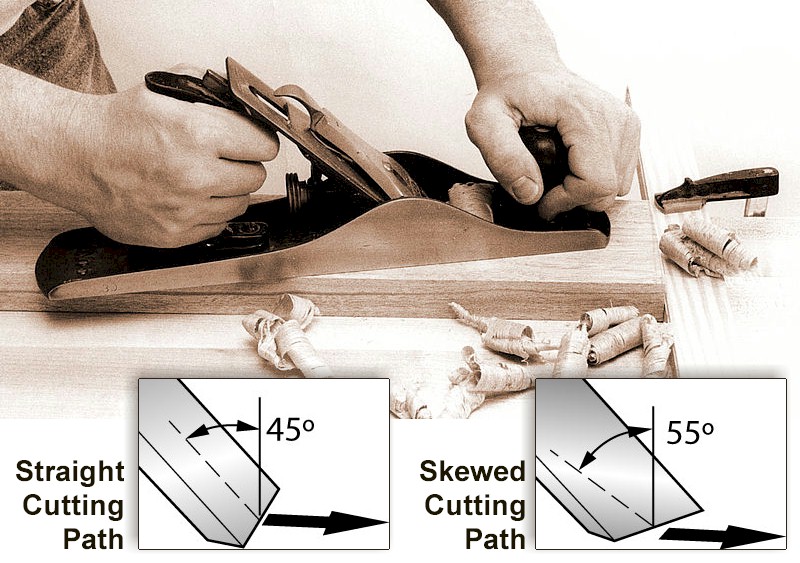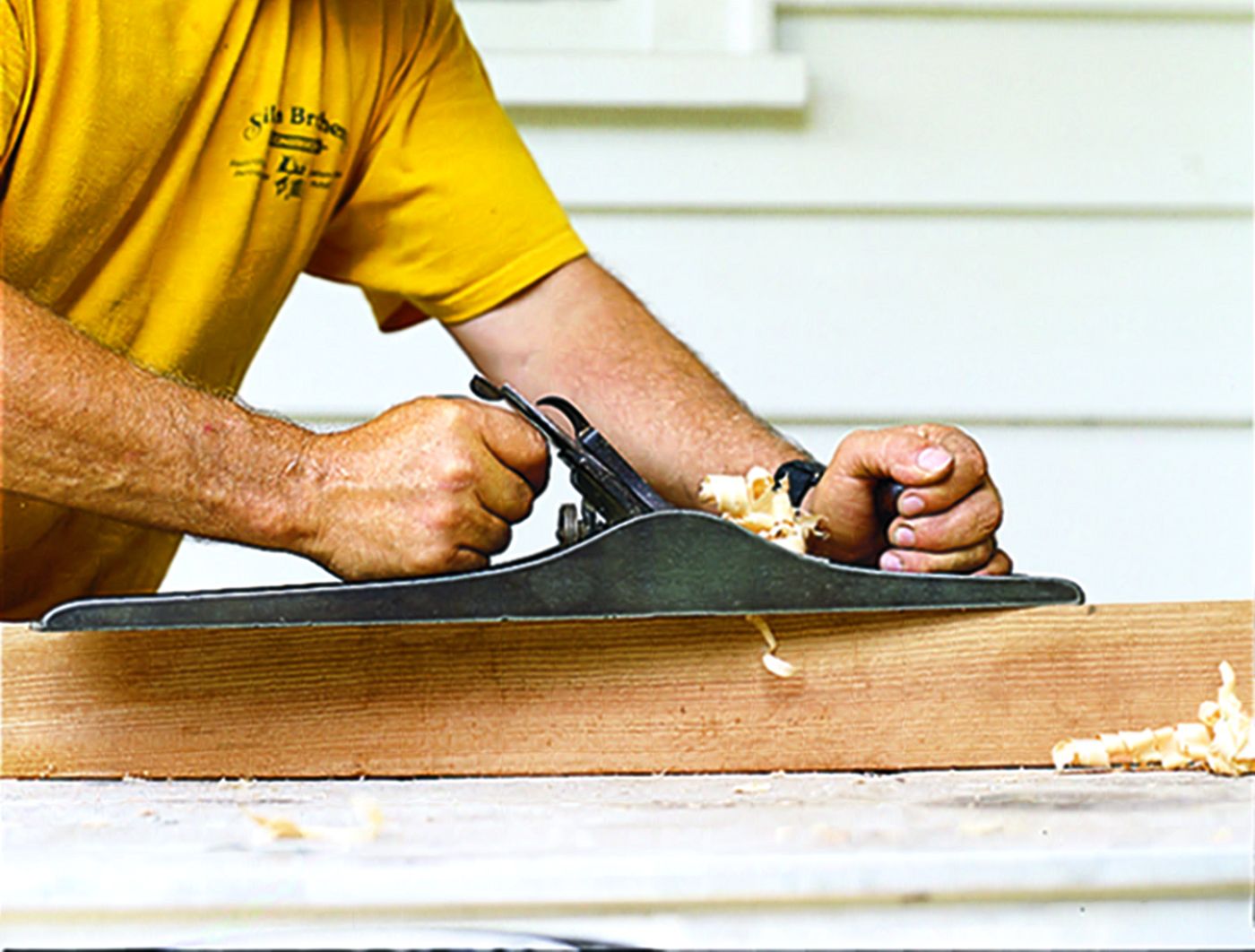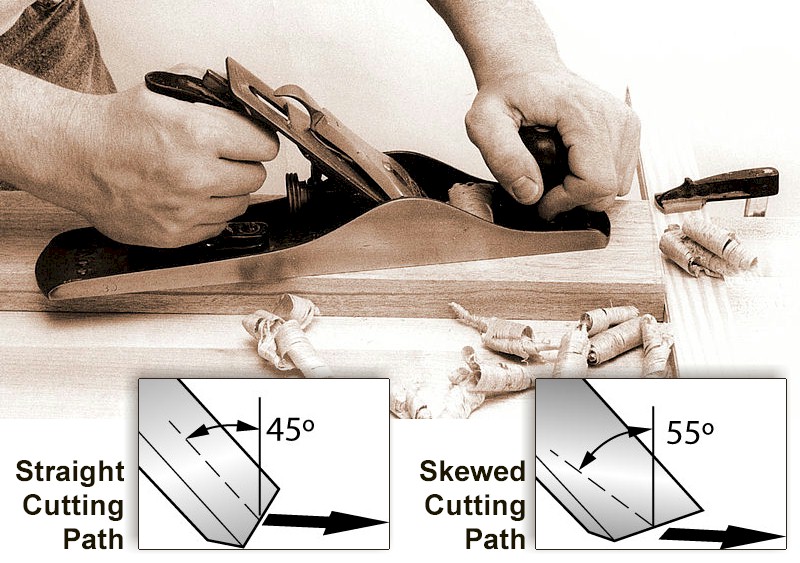Looking to discover the versatility of a hand planer? Wondering what you can use a hand planer for? You’re in the right place! Whether you’re tackling a DIY project or pursuing a hobby, a hand planer is an essential tool that can make your woodworking adventures easier and more enjoyable. Join me as we explore the exciting world of hand planers and uncover their numerous applications.
With a hand planer in your toolbox, you can effortlessly shape and smooth wooden surfaces, removing imperfections and creating a polished finish. From leveling uneven boards to chamfering edges, a hand planer allows you to achieve precise and professional results. Plus, its portable nature makes it perfect for on-the-go woodworking projects or small-scale repairs around the house.
But that’s not all! A hand planer can also be used to adjust the thickness of a wooden piece, allowing you to customize the dimensions according to your project requirements. Whether you’re crafting a masterpiece or refurbishing furniture, a hand planer gives you the power to shape your materials with accuracy and precision.
So, if you’re ready to take your woodworking skills to the next level, grab a hand planer and let your creativity soar. From smoothing rough surfaces to adjusting thickness, the possibilities are endless. Get ready to unleash the potential of this versatile tool and embark on a woodworking journey like never before!

What Can You Use a Hand Planer For? A Guide to Hand Planer Uses
Hand planers are versatile tools that can be used for a variety of woodworking tasks. Whether you are a professional carpenter or a DIY enthusiast, a hand planer is a must-have tool in your arsenal. In this guide, we will explore the various uses of a hand planer and how it can help you achieve smooth and precise results in your woodworking projects.
Benefits of Using a Hand Planer
A hand planer offers several advantages over other woodworking tools. Firstly, it allows you to remove material quickly and efficiently, saving you time and effort. Unlike power planers, hand planers give you better control and precision, making them ideal for working on smaller projects or intricate details. Additionally, hand planers are portable and do not require electricity, making them suitable for on-site woodworking or working in areas without power access.
Smoothing Rough Lumber
One of the primary uses of a hand planer is to smooth rough lumber. When working with rough-cut timber, the surface is often uneven, with splinters, ridges, and imperfections. A hand planer allows you to level the surface, creating a smooth and even finish. By adjusting the depth of the cut and making repeated passes, you can gradually remove the high spots and achieve a flat and polished surface.
Another benefit of using a hand planer for smoothing rough lumber is that it enables you to work with different types of wood. Some wood species may have interlocking grain patterns or irregularities that can be challenging to work with using other tools. A hand planer allows you to easily tackle these issues, resulting in a smoother surface ready for further refinement or finishing.
Trimming and Shaping Doors
Hand planers are also useful for trimming and shaping doors. When installing new doors, it is common for them to be slightly oversized or misaligned. A hand planer can quickly remove excess material, allowing the door to fit perfectly within the frame. By making controlled passes with the hand planer, you can achieve precise cuts and adjust the size of the door to ensure a proper fit.
In addition to trimming doors, a hand planer can also be used to shape and smoothen the edges. This is particularly useful when working with custom or antique doors that require minor adjustments for aesthetic purposes. With a hand planer, you have the flexibility to shape the door edges to your desired profile, adding a personal touch to your woodworking projects.
Creating Bevels and Chamfers
Hand planers are excellent tools for creating bevels and chamfers on edges. Bevels and chamfers are decorative features that add visual interest and can also serve functional purposes. By beveling the edges of a tabletop or countertop, for example, you can prevent sharp corners and make the piece more durable. A hand planer allows you to achieve precise and consistent bevels, giving your woodworking projects a professional and polished look.
In addition to bevels, hand planers can also be used to create chamfers. Chamfers are angled cuts on the edges of wood that provide a decorative or functional edge. Whether you want to create a chamfered edge on furniture, cabinets, or trim, a hand planer offers the control and precision necessary for achieving clean and well-defined chamfers.
Hand Planer for Curved Surfaces
When it comes to working on curved surfaces, a hand planer can be a valuable tool. Whether you are smoothing the edge of a round tabletop or shaping the contours of a wooden sculpture, a hand planer can help you achieve smooth and even results. By adjusting the depth of the cut and utilizing the curvature of the sole, you can remove material gradually and maintain control over the shaping process.
Hand Planer for Joinery
Hand planers are also commonly used for joinery tasks. When working with joinery, such as creating mortises or fitting joints together, precision is crucial. A hand planer allows you to shave off small amounts of material, ensuring a tight and accurate fit. Whether you are creating dovetail joints, rabbets, or dadoes, a hand planer helps you achieve the desired fit and strength in your joinery work.
Hand Planer for Smoothing Paneling and Doors
If you are working with paneling or doors that have been installed or painted, a hand planer can be a useful tool for achieving smooth surfaces. Over time, paint buildup or minor imperfections can result in uneven surfaces. A hand planer can quickly and efficiently level the surface, providing a smooth and even finish. This is particularly beneficial when refinishing or refreshing old paneling or doors, giving them a renewed and polished appearance.
Fine-Tuning and Final Touches
Hand planers are also valuable for fine-tuning and adding final touches to your woodworking projects. Whether you need to remove sharp edges, achieve a specific thickness, or smooth out small imperfections, a hand planer allows you to make precise adjustments. Its versatility and control make it an essential tool for achieving professional and refined results in your woodworking endeavors.
In conclusion, a hand planer is a versatile tool that can be used for a wide range of woodworking tasks. From smoothing rough lumber to trimming and shaping doors, creating bevels and chamfers, working on curved surfaces, joinery, and adding final touches, a hand planer offers precision, control, and efficiency. By incorporating a hand planer into your woodworking toolbox, you can elevate your projects and achieve professional-quality results.
Key Takeaways: What Can You Use a Hand Planer For?
- A hand planer is a tool used for smoothing and shaping wood surfaces.
- It can be used to remove imperfections, such as bumps or splinters, from wooden boards.
- Hand planers are great for trimming doors or windows to ensure a perfect fit.
- They can also create chamfers and bevels on edges for decorative purposes.
- A hand planer can be used to level uneven surfaces, like tabletops or wooden floors.
Frequently Asked Questions
Welcome to our handy guide on using a hand planer! Below, we have answered some common questions related to this topic. Whether you’re a beginner or an experienced DIY enthusiast, we hope you find these answers helpful and informative.
1. Why would I use a hand planer instead of an electric planer?
Hand planers offer a few advantages over electric planers. First, they are more portable and versatile, allowing you to use them in tight spaces or on irregular surfaces. Additionally, hand planers are quieter and produce less dust, making them a great choice for indoor projects. While electric planers are faster, hand planers give you more control and precision.
Plus, using a hand planer can be a satisfying and meditative experience, allowing you to feel connected to your woodworking project on a deeper level. So, if you enjoy the process of shaping and smoothing wood by hand, a hand planer is a great tool to have in your toolbox.
2. Can I use a hand planer on different types of wood?
Definitely! Hand planers can be used on various types of wood, including softwoods like pine and cedar, as well as hardwoods like oak and maple. However, it’s important to choose the right type of hand planer and adjust its settings accordingly.
For softer woods, use a bench plane or a smoothing plane with a low cutting angle to prevent tear-out. If you’re working with harder woods, a block plane or a jack plane with a higher cutting angle will be more effective. Before starting, it’s always a good idea to test the hand planer on a scrap piece of wood to ensure you achieve the desired results.
3. What kind of tasks can I accomplish with a hand planer?
A hand planer is a versatile tool that can be used for a wide range of tasks. It excels at trimming doors, planing rough lumber to size, smoothing uneven surfaces, beveling edges, and creating chamfers. It can also be used for leveling uneven joints, removing paint or old finishes, and even shaping curved surfaces.
Whether you’re a woodworker, carpenter, or simply someone who enjoys DIY projects, a hand planer is a valuable tool for achieving smooth and professional results.
4. How do I maintain and sharpen my hand planer?
To keep your hand planer in top shape, regular maintenance is key. After each use, make sure to clean off any wood shavings or debris from the blade and body. Lubricate the moving parts with a light machine oil to prevent rust and ensure smooth operation.
As for sharpening the blade, it’s best to use a honing guide along with sharpening stones to maintain the correct angle. Start with a coarse-grit stone and gradually work your way up to a finer grit for a razor-sharp edge. Remember to remove all burrs and maintain a consistent bevel along the length of the blade. With proper maintenance and sharpening, your hand planer will deliver excellent results for years to come.
5. Can I use a hand planer on curved surfaces?
Yes, you can certainly use a hand planer on curved surfaces! When working with concave or convex curves, a spokeshave or a curved sole hand plane is the ideal tool. These specialized hand planers have a sole that matches the curve of the surface, allowing for precise shaping and smoothing.
When using a hand planer on curved surfaces, it’s best to work in the direction of the grain. Take light and controlled passes, gradually removing material to achieve the desired shape. Remember to constantly check your progress to ensure a smooth and even surface. With practice and patience, you’ll be able to create beautifully contoured surfaces with a hand planer.

Clever things you can do with an ELECTRIC hand planer
Summary
So, what can you use a hand planer for? A hand planer is a versatile tool that can be used for a variety of woodworking tasks, such as smoothing rough surfaces, trimming door edges, and shaping furniture pieces. It can even be used to remove paint or varnish from old furniture. With its sharp blade and adjustable settings, a hand planer is a handy tool for any DIY enthusiast or professional woodworker. Whether you’re working on a small home improvement project or a large woodworking job, a hand planer can help you achieve smooth and precise results. So, next time you see a hand planer, remember its potential and the many ways it can be used in your woodworking adventures.
